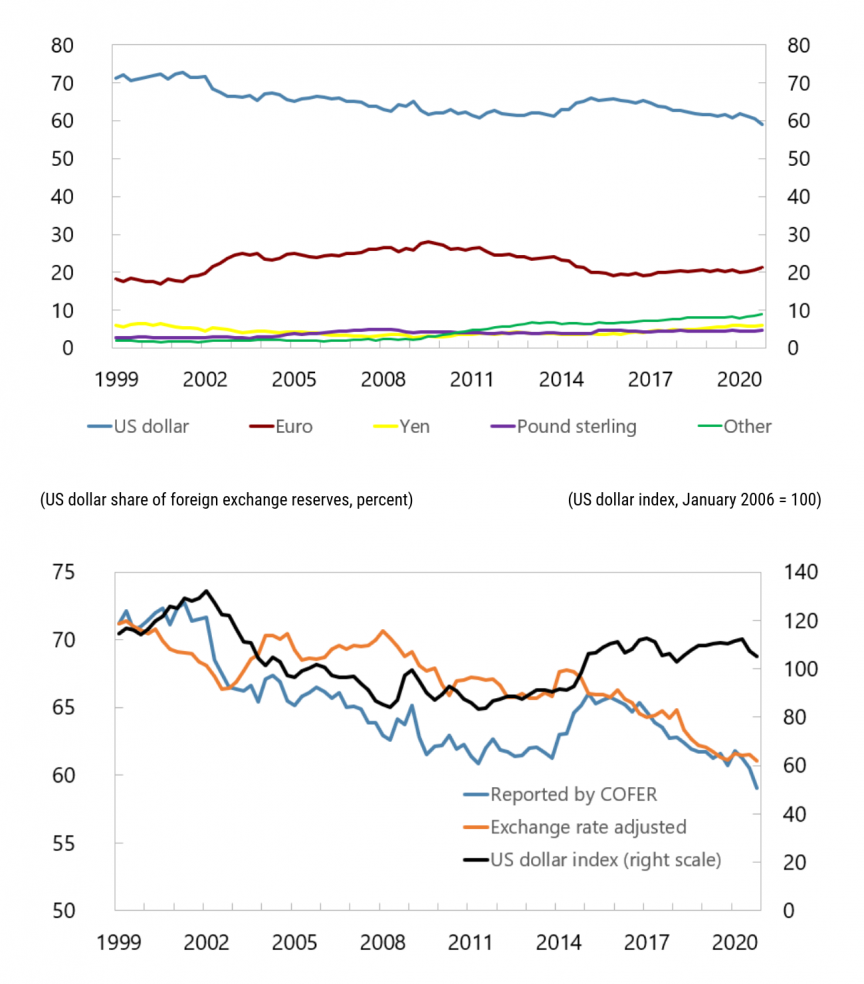
The notion of a digital dollar for the United States has been increasingly in the news in recent months. Research by the Federal Reserve into a Central Bank Digital Currency (CBDC) has been ongoing, and it’s easy to see why: between efforts from China to use digital currency in apps, to the increasing adoption rate of cryptocurrencies, and other faster payments technologies, it’s clear that technology supporting the digital vision is here. A U.S. CBDC could offer significant advantages.
But that implementation is no simple task. This week, the Fed released a new paper exploring what impact pursuit of a CBDC might have on monetary policy going forward, considering a scenario in which a digital dollar were widely adopted for both payments and as a store of value. It raises some clear concerns; while swapping cash for digital dollars doesn’t change much on a macro scale for how the economy runs, replacing bank deposits with digital currency definitely would – the balance sheets at commercial banks would almost certainly shrink, driving a need for greater reserves and potentially impacting credit availability.
It’s just one reason not everyone thinks that a Federal Reserve-backed digital currency is a wise idea – and indeed, that linking the U.S. dollar to the blockchain would only be a way to negate the advantages that make crypto appealing for many in the space. A working paper from Web 3.0 – Collateral Insights by Christian Kameir, Managing Partner at Sustany Capital, outlined many of the concerns from innovators in the sector.
Many of the current concerns stem back to a January 2022 release from the Fed, which Kameir notes misses an important point: in the opinion of the contributors to the piece, currency and money are two very different things.
“The paper’s conflation of legal concepts (money) and technology (currency) clouds all further analysis and makes it difficult for the authors to correctly identify technological innovation in general, and network technologies in particular. A shortcoming exemplified by the manuscript’s brief excursion into ‘digital assets’ — a rather problematic term itself – on page eleven, which starts out by proclaiming that cryptocurrencies may have ‘money-like characteristics’, while further repeating a number of long-debunked myths surrounding the space of cryptographic primitives and decentralized software solutions — aka ‘blockchains’.”‘
Currencies have country risk, liquidity risk, and exchanged handling costs tied to them. A commodity has its own issues, but the value of a true currency is a whole different topic. So, when the Fed says they’re looking to introduce a digital dollar as a cryptocurrency, what are the components of risk for that which people have to monitor? As Kameir put it:
“The main risk is mitigated property rights. If I have money in an account, I don’t really have money; I have a claim against a bank. That’s different from money in my pocket. Possession is 90% of ownership. That’s what we should be looking for in a digital asset. Every transaction needs to be addressed on its own merit.”
Privacy also remains a concern. Unlike most physical cash transactions, it would be entirely possible for the Fed to gather a lot of information about how a digital dollar is being spent. Ostensibly, this could help combat criminal activity. But it’s a real tightrope to be walked between offering protections against bad actors and protecting consumer privacy rights. It is, at least, an issue that is a strong point of focus for the Fed, as noted in their January paper:
“A general-purpose CBDC would generate data about users’ financial transactions in the same ways that commercial bank and nonbank money generates such data today. In the intermediated CBDC model that the Federal Reserve would consider, intermediaries would address privacy concerns by leveraging existing tools.”
This model can’t — and indeed, doesn’t seem to aim to — replicate the total anonymity of a cash transaction. Aiming for a level of privacy on par with payments made through traditional banking systems is a start, and for some, likely to be sufficient as an end state, particularly as it will include several safeguards and the level of reversability that customers making online purchases are accustomed to today.
All that said, there still a lot about the idea that holds an obvious appeal. The U.S. dollar is a bedrock of trust for currencies, and there’s a reason that it stands as the surety for most existing stablecoins. A CBDC could, if anything, make it even easier for the dollar to be used abroad, with an easier road to tracking where money’s being used.
And beyond any concerns, there remains a real need for the U.S. to take these steps to enter the space, as even the Collateral Insights paper noted:
“In as much as digital bearer instruments of any unit of account can settle with finality in near real time, and provide “programmable money” optionality, these are a already technical reality which cannot be ignored without suffering the consequences of technological debt. The latter can already readily be observed in the decline of USD denominated transactions of global economic activity. According to the International Monetary Fund the US Dollar’s share in global exchange reserves has fallen to its lowest level in twenty years.”
So we continue to watch as the Fed takes it first steps on this vital journey — and hope that they don’t make missteps along the way.
